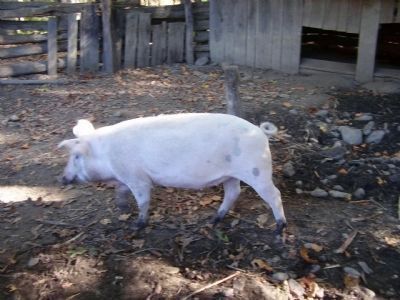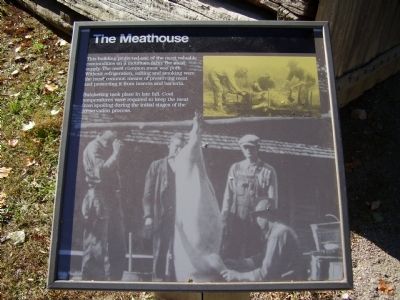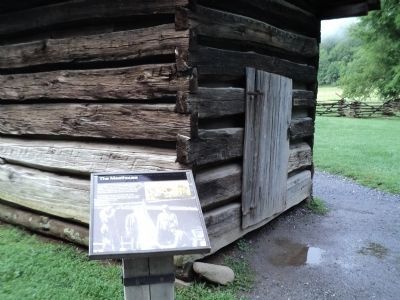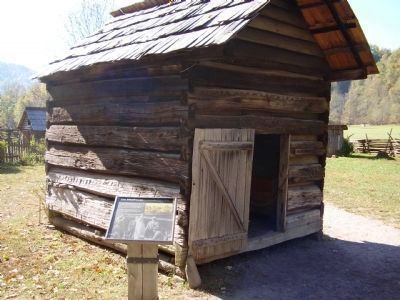Great Smoky Mountains National Park in Swain County, North Carolina — The American South (South Atlantic)
The Meathouse
Butchering took place in late fall. Cool temperatures were required to keep the meat from spoiling during the initial stages of the preservation process.
Erected by National Park Service.
Topics. This historical marker is listed in this topic list: Settlements & Settlers.
Location. 35° 30.766′ N, 83° 18.301′ W. Marker is in Great Smoky Mountains National Park, North Carolina, in Swain County. Marker is on Route 441, half a mile north of Blue Ridge Parkway. Touch for map. Marker is in this post office area: Cherokee NC 28719, United States of America. Touch for directions.
Other nearby markers. At least 8 other markers are within walking distance of this marker. Apple House (a few steps from this marker); Springhouse (within shouting distance of this marker); Mountain Farm Museum (within shouting distance of this marker); Corn Cribs (within shouting distance of this marker); Sorghum Mill and Furnace (about 300 feet away, measured in a direct line); Blacksmith Shop (about 300 feet away); Broomcorn (about 300 feet away); Sorghum Cane (about 300 feet away). Touch for a list and map of all markers in Great Smoky Mountains National Park.
More about this marker. This marker is on the Mountain Farm Museum

Photographed By Stanley and Terrie Howard, October 19, 2008
4. Hogs
Hogs were the main source of meat on mountain farms. They could produce several large litters of offspring each year, which helped insure a family's supply of meat. Surplus livestock could also be sold to produce extra income for the family. The meat was relatively easy to preserve, usually by curing it with salt, and the lard produced from the fat was used in cooking and soap making.
Hogs were so self-sufficient that they were turned out into the forest to forage for food. Fall was the only time many families penned some of their hogs to fatten them for butchering. To keep track of their hogs and avoid disputes over ownership, farmers frequently cut identifying marks into the animal's ears.
Credits. This page was last revised on October 22, 2016. It was originally submitted on October 20, 2008, by Stanley and Terrie Howard of Greer, South Carolina. This page has been viewed 1,012 times since then and 19 times this year. Photos: 1. submitted on October 20, 2008, by Stanley and Terrie Howard of Greer, South Carolina. 2. submitted on August 29, 2012, by Bill Coughlin of Woodland Park, New Jersey. 3, 4. submitted on October 20, 2008, by Stanley and Terrie Howard of Greer, South Carolina. • Bill Pfingsten was the editor who published this page.


